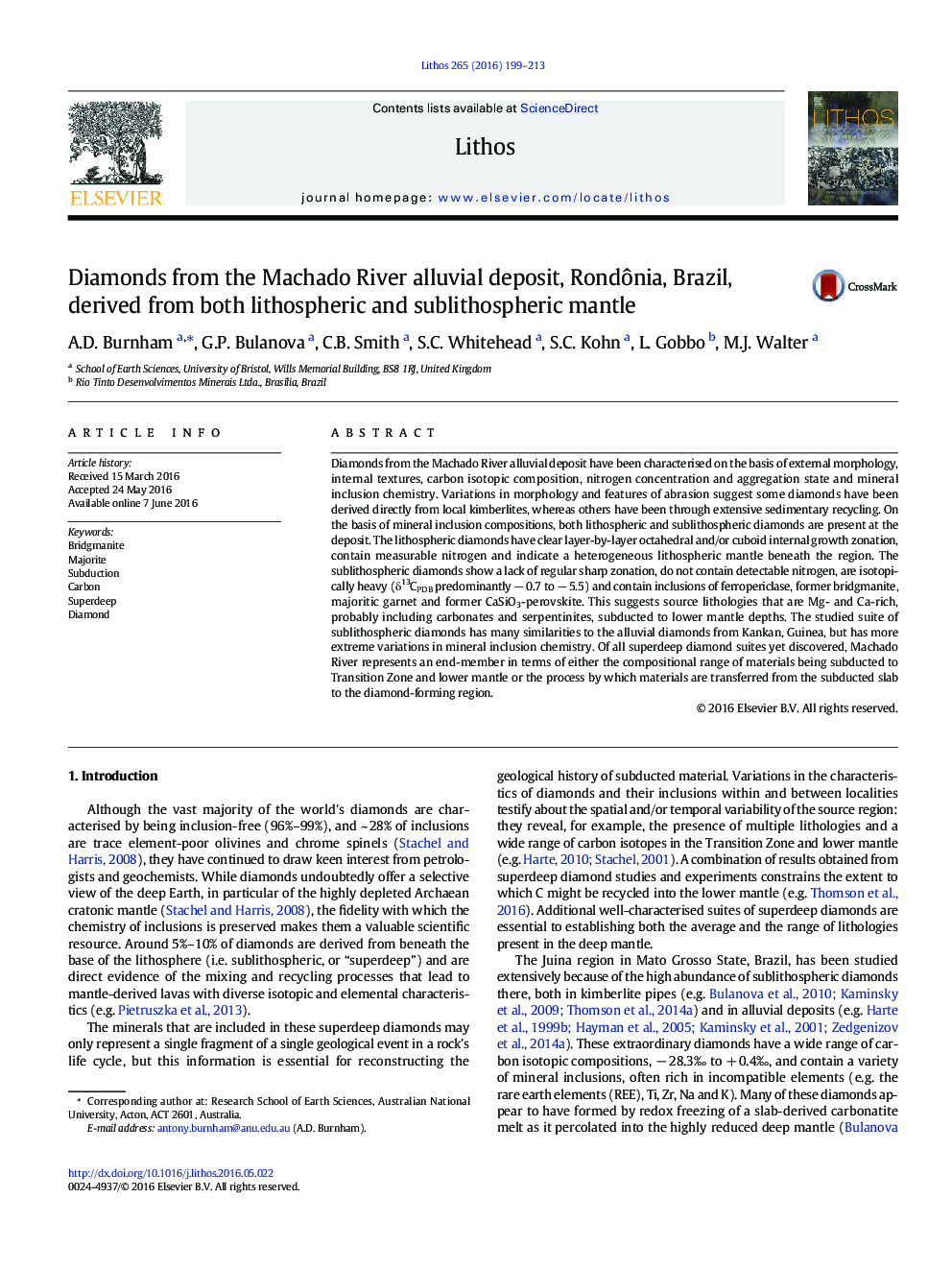| Article ID | Journal | Published Year | Pages | File Type |
|---|---|---|---|---|
| 5784310 | Lithos | 2016 | 15 Pages |
â¢the Machado River alluvial diamond deposit is derived from multiple sourcesâ¢the sublithospheric diamonds there derive from the Transition Zone and lower mantleâ¢C isotopes and trace elements suggest this is the fate of subducted carbonatesâ¢the diamond-forming fluid likely contained water (perhaps from metaserpentinites)
Diamonds from the Machado River alluvial deposit have been characterised on the basis of external morphology, internal textures, carbon isotopic composition, nitrogen concentration and aggregation state and mineral inclusion chemistry. Variations in morphology and features of abrasion suggest some diamonds have been derived directly from local kimberlites, whereas others have been through extensive sedimentary recycling. On the basis of mineral inclusion compositions, both lithospheric and sublithospheric diamonds are present at the deposit. The lithospheric diamonds have clear layer-by-layer octahedral and/or cuboid internal growth zonation, contain measurable nitrogen and indicate a heterogeneous lithospheric mantle beneath the region. The sublithospheric diamonds show a lack of regular sharp zonation, do not contain detectable nitrogen, are isotopically heavy (δ13CPDB predominantly â 0.7 to â 5.5) and contain inclusions of ferropericlase, former bridgmanite, majoritic garnet and former CaSiO3-perovskite. This suggests source lithologies that are Mg- and Ca-rich, probably including carbonates and serpentinites, subducted to lower mantle depths. The studied suite of sublithospheric diamonds has many similarities to the alluvial diamonds from Kankan, Guinea, but has more extreme variations in mineral inclusion chemistry. Of all superdeep diamond suites yet discovered, Machado River represents an end-member in terms of either the compositional range of materials being subducted to Transition Zone and lower mantle or the process by which materials are transferred from the subducted slab to the diamond-forming region.
